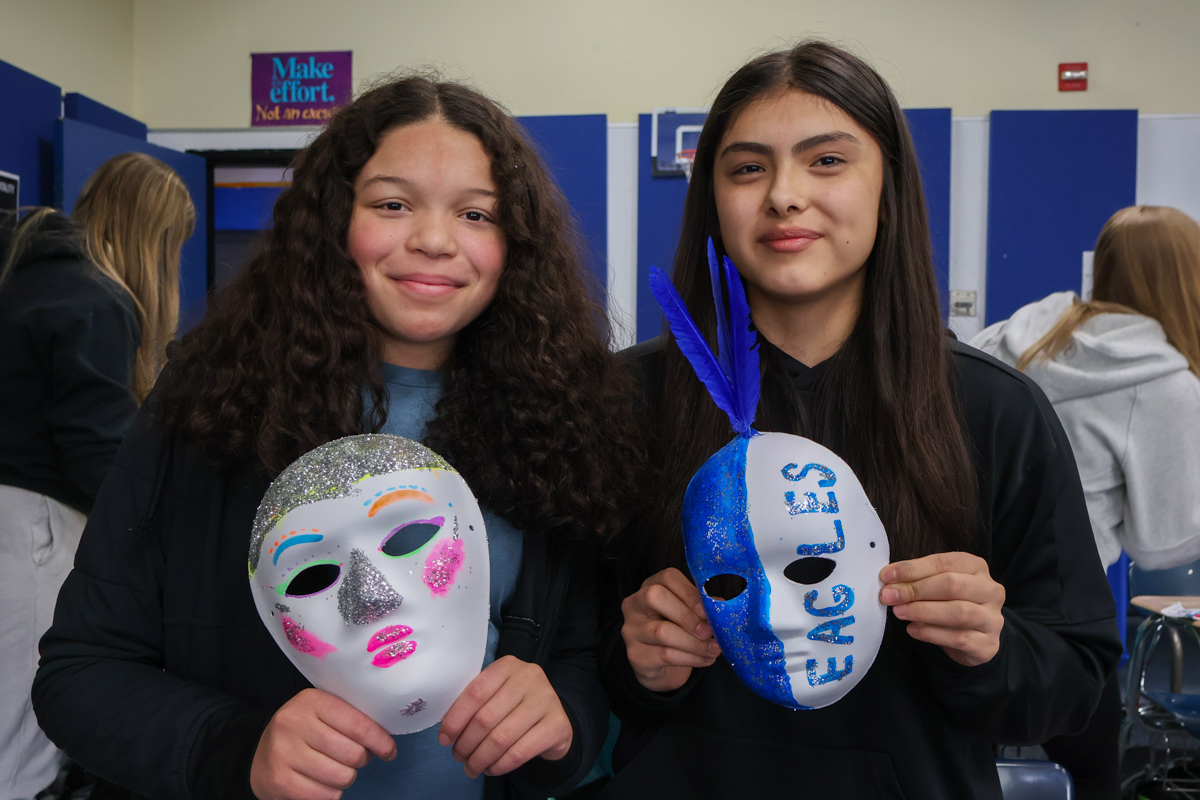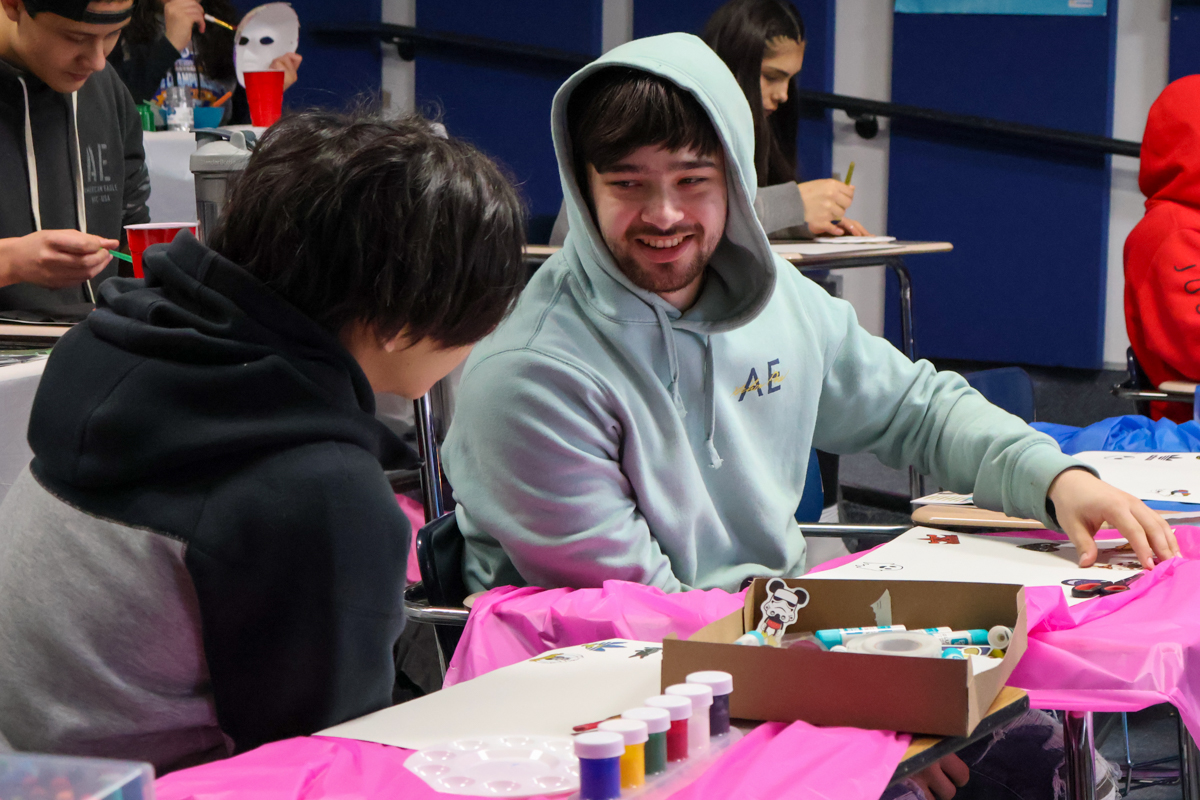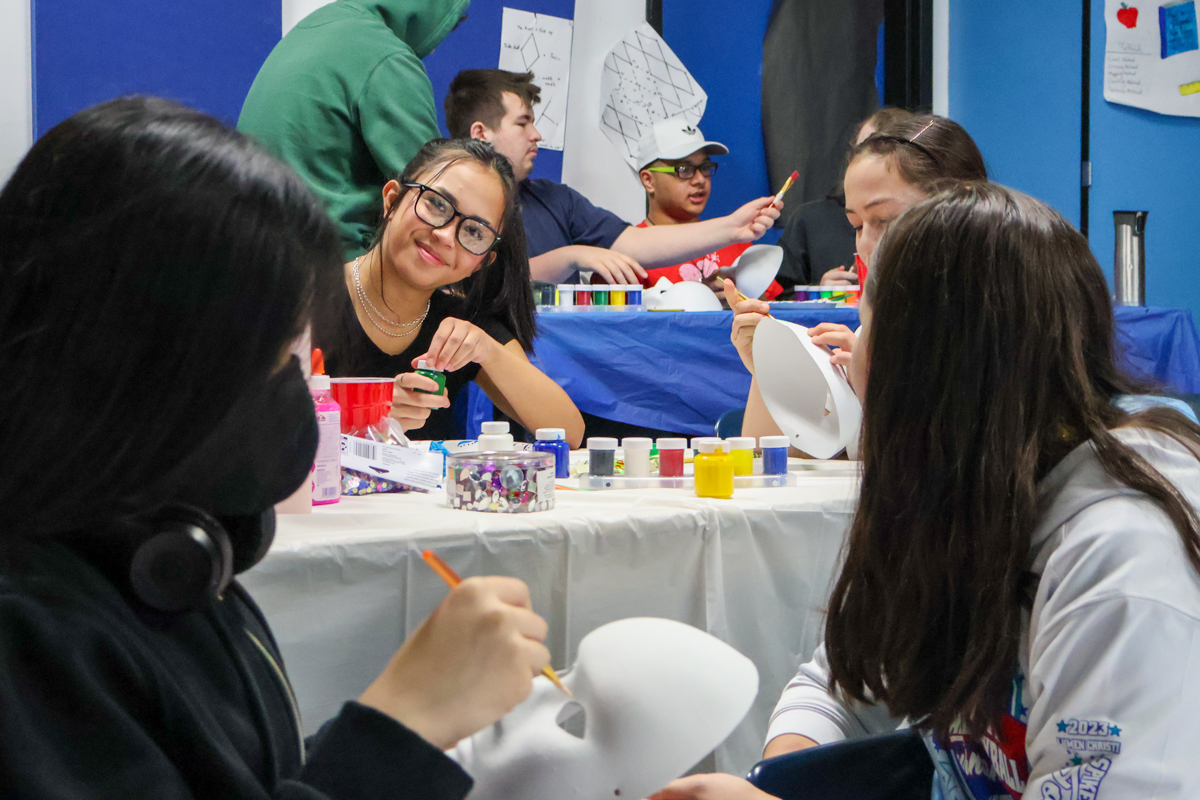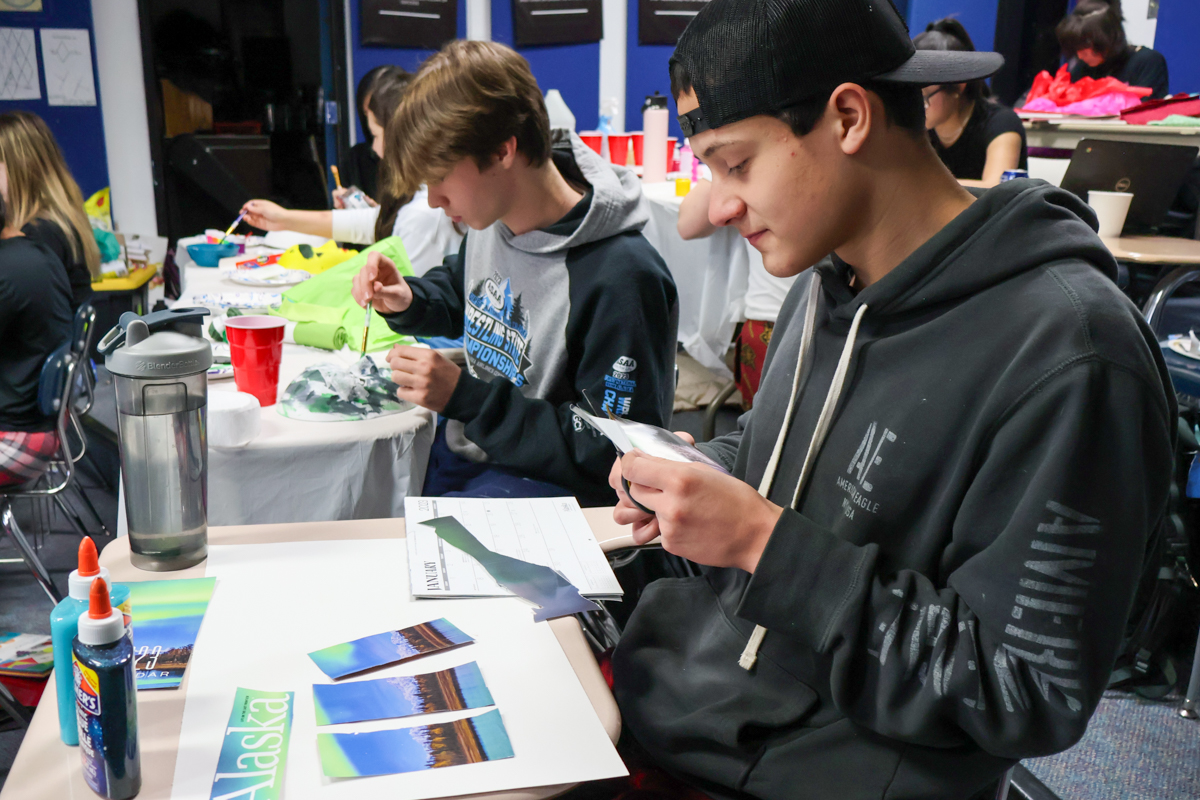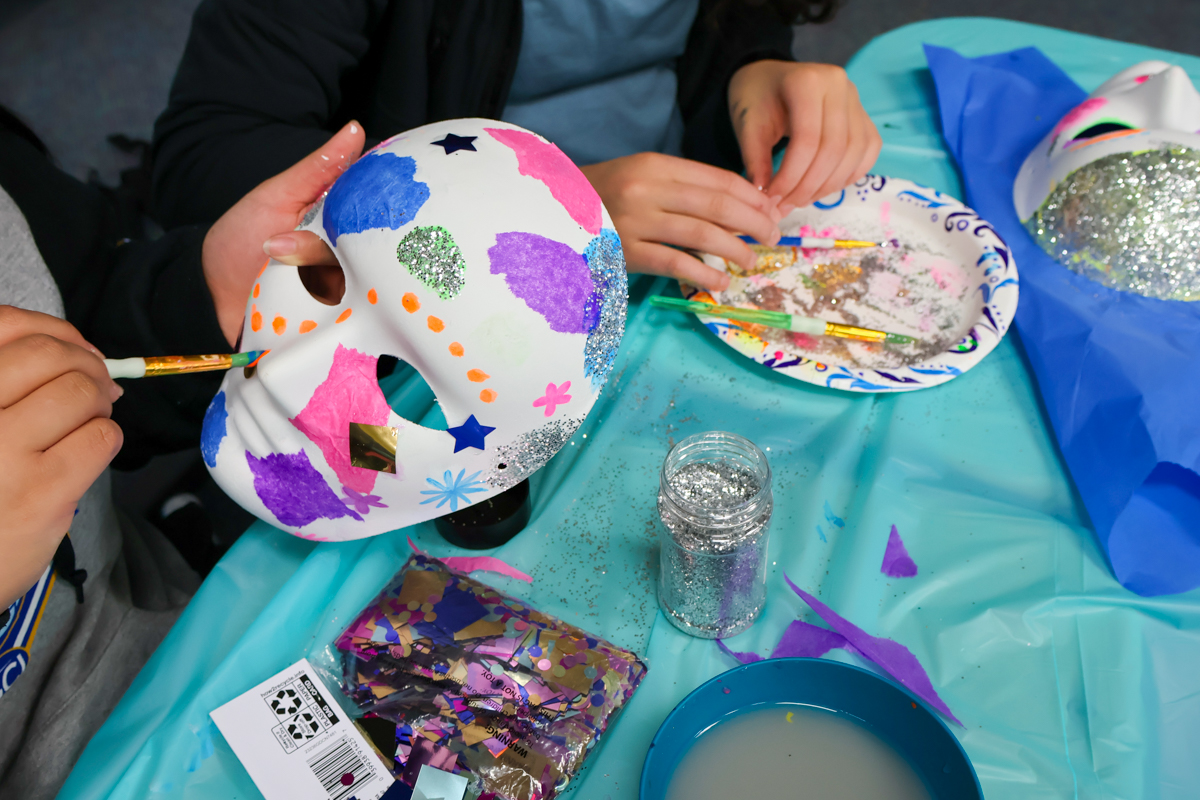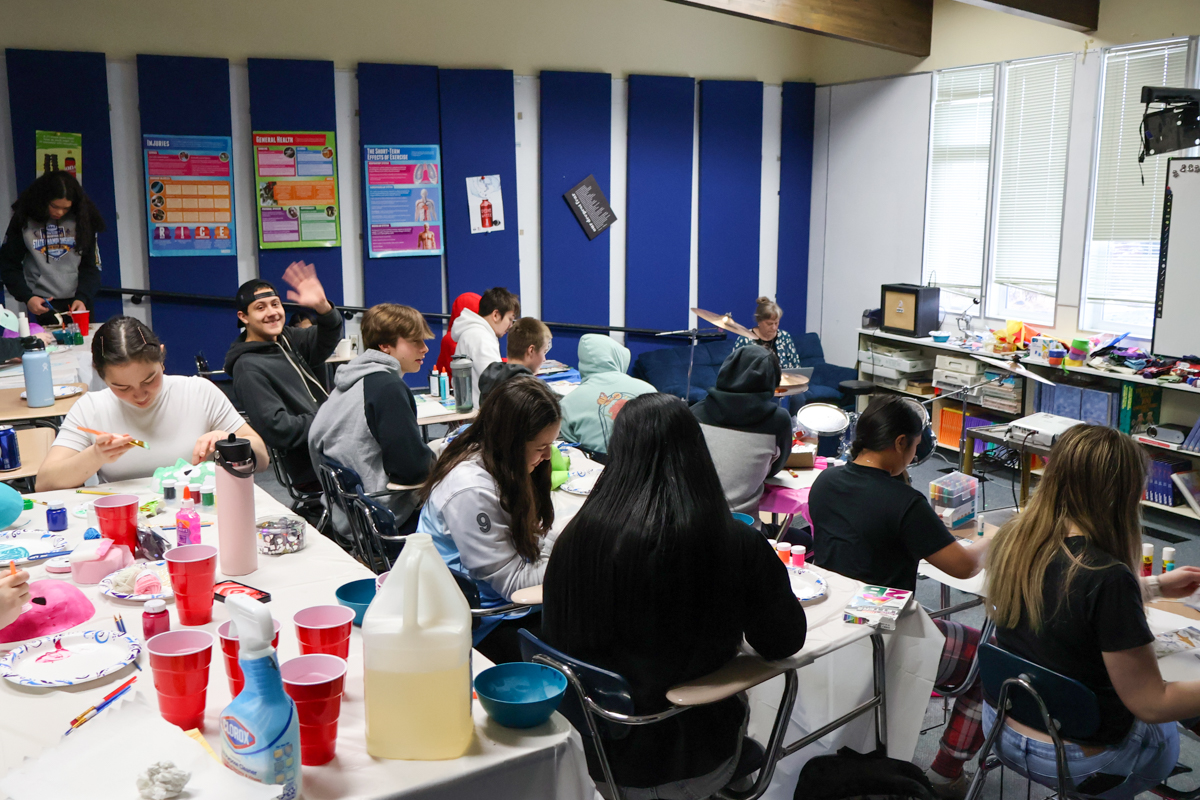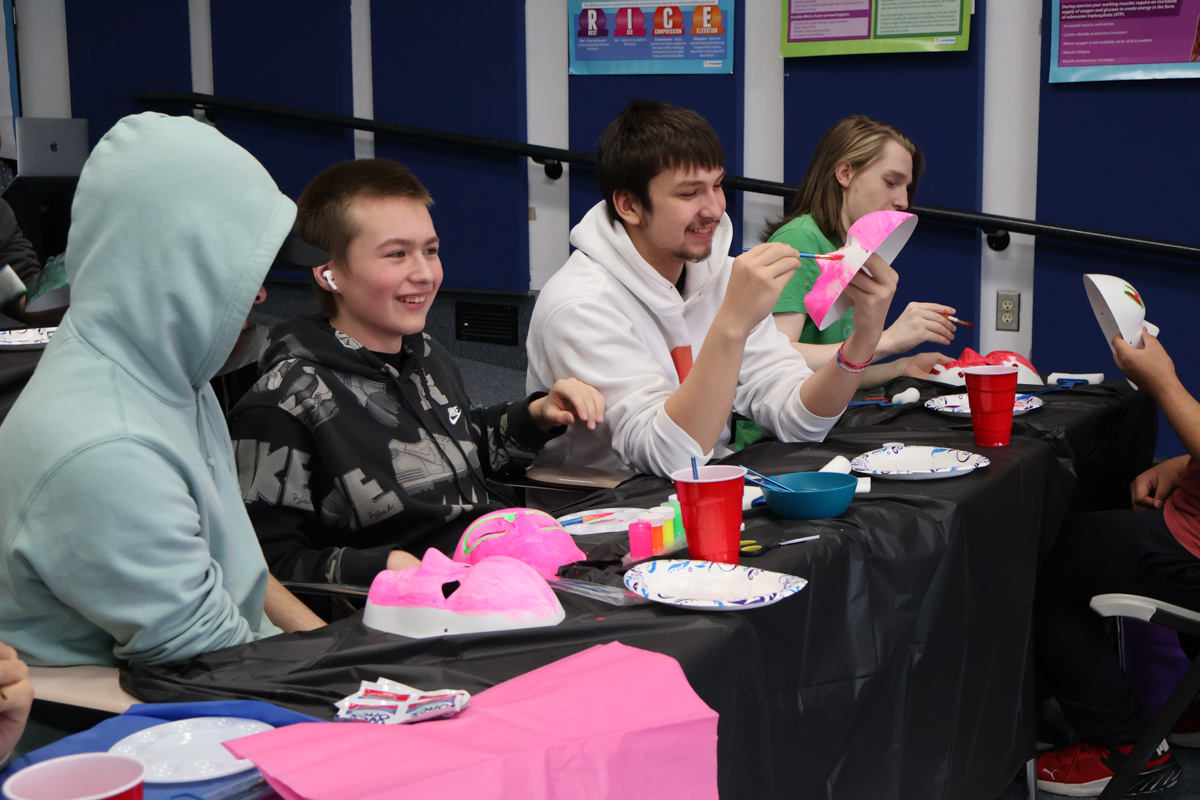Alaska's AHEC: Behavioral Health Education in Sand Point
by Jessica Degnan |
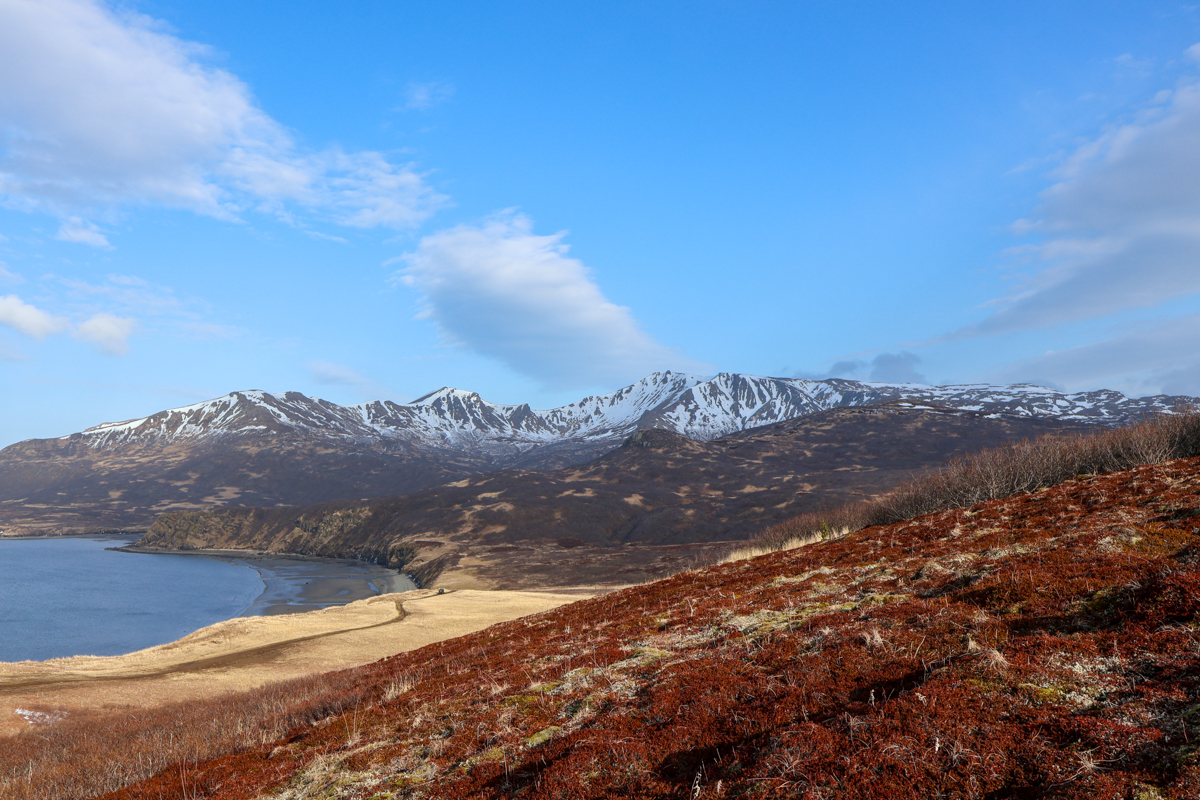 Excited chatter echoed through the music classroom as 30 high school students applied
acrylic paint and mixed media to paper mache masks. Each unique in design, whether
it be an eagle painted in honor of the school mascot or an Alaskan sunset incorporating
deep hues of orange and yellow portrays emotion and tells a student’s story. At Sand
Point School in Sand Point, a beautiful coastal community located off the Alaska Peninsula,
Southwest Area Health Education Center (AHEC) in conjunction with its host organization, Aleutian Pribilof Islands Association (APIA) hosted different activities throughout the week to introduce students to art therapy
techniques and other behavioral health topics.
Excited chatter echoed through the music classroom as 30 high school students applied
acrylic paint and mixed media to paper mache masks. Each unique in design, whether
it be an eagle painted in honor of the school mascot or an Alaskan sunset incorporating
deep hues of orange and yellow portrays emotion and tells a student’s story. At Sand
Point School in Sand Point, a beautiful coastal community located off the Alaska Peninsula,
Southwest Area Health Education Center (AHEC) in conjunction with its host organization, Aleutian Pribilof Islands Association (APIA) hosted different activities throughout the week to introduce students to art therapy
techniques and other behavioral health topics.
Southwest AHEC Director, Olivia Bridges said “Partnering with Sand Point School has allowed Southwest AHEC to engage with high school students who are interested in learning more about behavioral health. It’s amazing to hear that so many of these students want to work as medical and behavioral health providers in the future for their community, in other parts of Alaska, and other states. Facilitating these programs with such active youth inspires me and I always learn something new I can apply to future programming around health workforce development.”
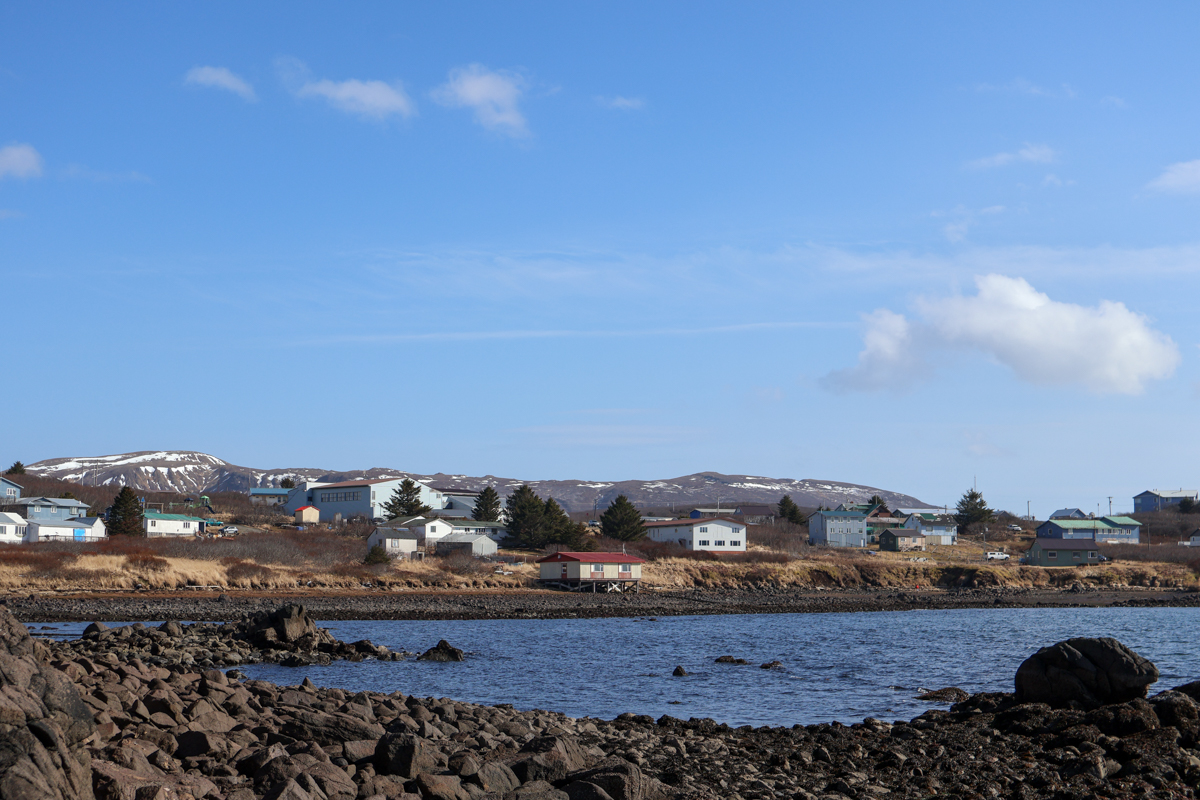
Bridges and Jessica Degnan, Communications Coordinator for the AHEC Program Office at the Alaska Center for Rural Health & Health Workforce (ACRH-HW) with the University of Alaska Anchorage (UAA), co-instructed a one-week dual credit class in early April. Alaska’s AHEC hosts a variety of classes such as these to increase the health workforce by engaging youth in healthcare related education initiatives. Throughout the week, students participated in a variety of didactic and hands-on activities that introduced them to different types of careers in behavioral health, therapeutic modalities and self-care skills.
Precious Kaminanga, a freshman at Sand Point School, offered her insight on how communities can better support the mental health needs of teenagers. “By encouraging and normalizing them to talk about how they feel and what they’re dealing with; by teaching them some ways to cope.”
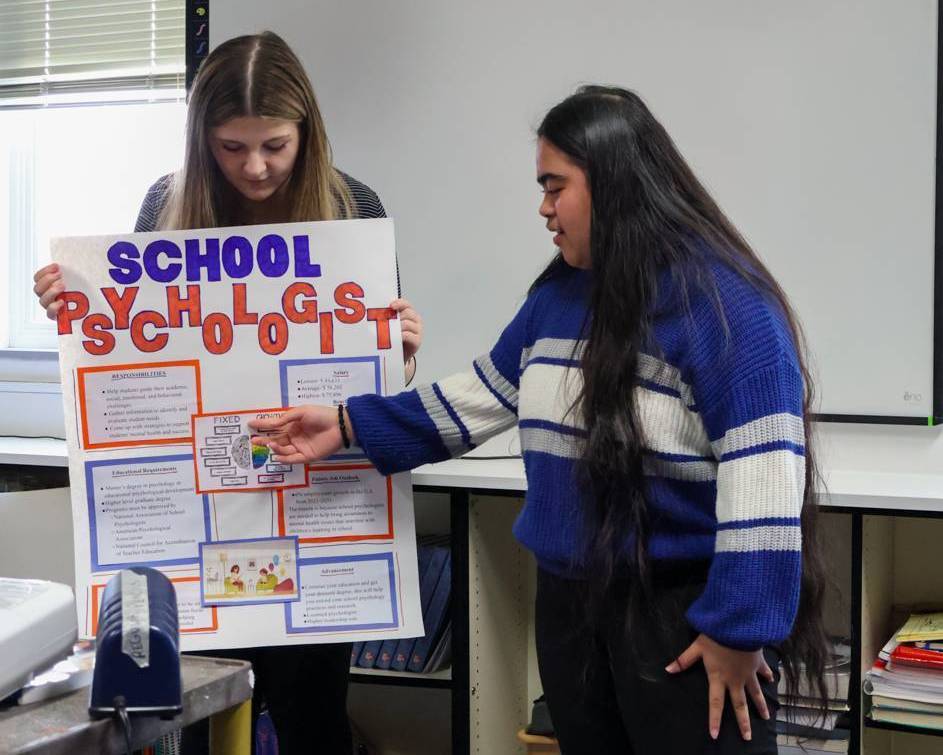 Teen Mental Health First Aid was an important component of the class. The evidence-based curriculum empowers teens aged 15-17 to support peers experiencing
mental health challenges by identifying warning signs and bringing a responsible,
trusted adult into the situation. In addition to designing paper mache masks, students
enjoyed a diverse range of therapeutic activities such as creating vision boards,
participating in music therapy sessions and gardening. Upon completing the class,
students earned a certification in teen Mental Health First Aid and took home valuable
coping strategies to help manage stress and foster emotional well-being. Twenty-five
of the thirty students earned two college credits from University of Alaska Fairbanks (UAF) Bristol Bay for their participation in this program with the majority of students providing positive
feedback about the curriculum.
Teen Mental Health First Aid was an important component of the class. The evidence-based curriculum empowers teens aged 15-17 to support peers experiencing
mental health challenges by identifying warning signs and bringing a responsible,
trusted adult into the situation. In addition to designing paper mache masks, students
enjoyed a diverse range of therapeutic activities such as creating vision boards,
participating in music therapy sessions and gardening. Upon completing the class,
students earned a certification in teen Mental Health First Aid and took home valuable
coping strategies to help manage stress and foster emotional well-being. Twenty-five
of the thirty students earned two college credits from University of Alaska Fairbanks (UAF) Bristol Bay for their participation in this program with the majority of students providing positive
feedback about the curriculum.
This class was made possible through partnerships between Sand Point School, Southwest AHEC paired with its host organization APIA Inc., ACRH-HW at the UAA, and the UAF Bristol Bay.

CATEGORIES
TAGS
- Awards
- Behavioral Health
- Climate Change
- Community
- COVID-19
- Diversity, Equity, and Inclusion
- Forensic Care
- Giving
- Simulation
- Workforce Development
ACADEMIC UNITS
- Department of Human Services
- Division of Population Health Sciences
- Justice Center
- School of Allied Health
- School of Nursing
- School of Preventive & Therapeutic Sciences
- School of Social Work
PARTNER PROGRAMS
CENTERS & INSTITUTES
- Alaska Center for Rural Health and Health Workforce
- Center for Human Development
- Child Welfare Academy
- Interprofessional Health Sciences Simulation Center
MEDIA INQUIRIES / STORY LEADS










